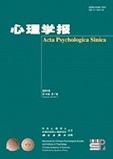People often need to predict how long tasks will take to complete. However, due to cognitive stinginess when tackling problems, individuals frequently exhibit irrational decision-making bias in planning long-term goals, leading to underestimations of task completion time, such as planning fallacy. A comparison between the theory of planning fallacy and existing research suggests that this bias may be related to the time clue of the task—the future boundary. Therefore, this study aims to explore the effects of task unpacking on time prediction and its cognitive mechanism under different time clues by setting the future boundary.
To investigate this, three experiments involving 458 college students were conducted, examining the impact of task unpacking and future boundary on time prediction and their cognitive mechanisms. Specifically, Experiment 1 employed a 2 (task unpacking: unpacking/packing) × 2 (future boundary: present/ absent) between-subjects design. The results showed that: (1) When no future boundary was present, the time predictions in the task unpacking condition were significantly shorter than those in the task packing condition. (2) When a future boundary was present, there was no significant difference in time predictions between the task unpacking and packing conditions.
Based on Experiment 1, Experiment 2 further investigated the effect of the time span of the future boundary on time prediction by manipulating the temporal distance between the future boundary and the present. The time span of the future boundary was determined through a pre-experiment, and the formal experiment adopted a 2 (task unpacking: unpacking/packing) × 3 (future boundary time span: short/medium/long) between-subjects design. The results showed that: (1) The longer the time span of the future boundary, the significantly longer the time predictions. (2) Under the condition of short future boundary time span, the time predictions for task unpacking were significantly longer than those for task packing. Under the condition of long future boundary time span, the time predictions for task unpacking were significantly shorter than those for task packing. There was no significant difference between task unpacking and packing under a medium time span of the future boundary.
On the basis of Experiment 2, Experiment 3 further explored the cognitive mechanism underlying the effects of future boundary time span on time prediction under task unpacking condition. A single factor two-level (future boundary time span: short/ long) between-subject design was used. The results revealed that: (1) In the short time span condition, participants focused more on the plan, while in the long time span condition, they considered obstacles more frequently. (2) Thought focus partially mediated the effect of the future boundary time span on time prediction. When the future boundary time span was shorter, participants paid more attention to the task execution plan, resulting in lower time predictions. Conversely, when the future boundary time span was longer, participants focused more on potential obstacles, leading to longer time predictions.
The findings of this study indicate that: (1) Task unpacking influences time prediction. (2) When the future boundary time span is longer, task unpacking exhibits a contraction effect; when the future boundary time span is shorter, it shows an expansion effect. (3) Under the task unpacking condition, the longer the future boundary time span, the more people tend to focus on obstacles, resulting in longer time predictions; the shorter the future boundary time span, the more people tend to focus on the plan, leading to shorter time predictions. Thought focus partially mediates the effect of future boundary time span on time prediction.




